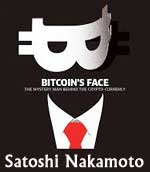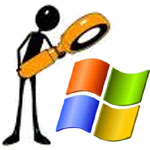
Bitcoin Blogs
 Dec 7, 2015
Dec 7, 2015
Bitcoin - the Liberation of Currency
Crypto-Blockchain-Web 3.0 Dictionary
NOTE: This is a work-in-progress as I add new words I don't understand. I don't only add definitions but bundle them together to see how they work together as a system. Building this has been a 'rush' as I stumble upon functional-knowledge upon functional-knowledge that serve as building blocks in using this exciting and emergent technology. -- TheLoneRider
- Blockchain - a decentralized database operating on a P2P (Peer to Peer) network that records all transactions that have ever taken place in that database. Crypto currencies popularized the blockchain technology, but the potential of a blockchain's function has far reaching applications that opens new doors like Web 3.0
- Consensus - when the full nodes agree that the transaction is valid, then there is a consensus. Consensus is essentially an algorithm that can take the form of PoW, PoS or PoT
- Forks - like apps and software that need to be updated, decentralized blockchains also need updating to fix bugs, fortify security and add new features. These changes are implemented through forks - thus forks are an inevitable part of the blockchain landscape. There are 2 types of forks:
- Hard fork - hard forks happen when 51% of the full nodes decide to change the rules and create another blockchain with its new set of rules. The blockchain splits permanently into 2 separate and independent blockchains, each having nothing to do with the other. Nodes are split as well into those with the old rules and those with the new rules. There is a mandatory rule for users to update their nodes accordingly. Typically, hard forks loosen up rigidity in the old rules. Hard forks can either be planned or contentious:
- Planned hard fork - this is announced beforehand with a high degree of consensus within the community and does not result in a permanent split of the blockchain. The entire community migrates to the new protocol and leaves behind the old one. A good example of a planned hard fork is Monero's RingCT fork (Ring Confidential Transactions)
- Contentious hard fork - when there is no consensus and a deepening rift creates chasm between miners, users and team developers, then the blockchain is split into 2 separate blockchains. A classic example of a contentious hard fork is the Bitcoin hard fork that resulted in 2 separate blockchains, the Bitcoin Cash and Bitcoin Core.
- Soft fork - there's no mandatory rule for users to update their nodes to the new rules. The new rules create a separate path on its own without severing its ties with the previous network. Users on the old system can still traverse between the 2 worlds. Typically, soft forks tighten up slack in the old rules.
A popular example of a soft fork is the Segregated Witness (SegWit) update to the Bitcoin network on August 23, 2017.
- Hard fork - hard forks happen when 51% of the full nodes decide to change the rules and create another blockchain with its new set of rules. The blockchain splits permanently into 2 separate and independent blockchains, each having nothing to do with the other. Nodes are split as well into those with the old rules and those with the new rules. There is a mandatory rule for users to update their nodes accordingly. Typically, hard forks loosen up rigidity in the old rules. Hard forks can either be planned or contentious:
- Hashing - it is an encrypted output of fixed length generated by a mathematical function (hashing algorithm, e.g. SHA-256 for Bitcoin), from input string of any length. This is used to enhance security (prevents double spending in crypto, protects passwords, etc.) Hashing has a few properties:
- Deterministic - the same input will always produce the same hash (the output)
- Quick Computation - getting the hash from the input text should be quick
- Pre-Image Resistance - it is nearly impossible to determine what the input characters are from the hash. It cannot be reverse-engineered
- Small Changes In The Input Changes the Hash - even just a change to upper case from lower case in one character will radically change the output (hash)
- Collision Resistant - 2 different inputs will hardly ever produce the same output (the hash)
- Puzzle Friendly - I'll be honest, I've read the explanation a few times already and I still don't know what they're talking about. I'll update this when I finally get it
- IPFS (Interplanetary File System) - IPFS is a decentralized peer-to-peer (not server-to-client) file sharing system where information between different network protocols (HTTP is one type of network protocol or internet protocol suite) is shared. Data/content is not centrally located on one server, but spread out across the many computers (nodes) within the network (could be a blockchain network). When you request for content (through a hash), the content is searched from the nearest nodes containing that content - this is more efficient.
IPFS vs HTTP
IPFS HTTP peer-to-peer server-to-client content-based file sharing from the nearest node in the network. Where is the nearest location for this content? location-based file transfer which could be half-way around the world. What content is in this location? decentralized through inter-connected computers on the network centralized from a server not good for transferring big files, not good when there is massive requests at the same time for the webpage open-source, Distributed Hash Tables (DHT), BitSwap protocol (Block Exchange marketplace), Merkle DAG, Self-certifying File System, Version Control Systems
- Mesh networks - in Qortal's blockchain, ISPs are replaced by mesh networks and satellite bridging. As local mesh networks grow, they depend less on their actual ISP, eventually utilizing satellites to bridge gaps between geographical locations until no gaps exist (no dead spots) and complete sovereignty is achieved.
Mesh network is a new form of wireless internet (like a router) designed to blanket an area with wifi coverage through its connection to the modem. It is mostly used in homes so that every room can receive coverage. The network is self-adjusting, allocating load and re-routing signals from congested areas or slow arteries.
In the Qortal ecosystem, this mesh network are the individual nodes that communicate with each other (aka points, mesh extenders, or satellites) that work together as one large wifi system. - Node - linked computers comprising the network on the blockchain. This is the feature of a blockchain that makes it decentralized through P2P (Peer to Peer) network (and NOT through a centralized authority or centralized server). Nodes do 2 functions: 1) enforce the rules through consensus and 2) validate transactions (blocks). Nodes branch out into different types:
- Full node - a copy of the entire blockchain is running on their computer - the entire history and all blocks created. This means that the more full nodes in the blockchain, the more copy of the blockchain (the ledger) is being created and referenced, thus enhancing the security of the blockchain. On proposed changes to the network, only the full nodes have voting privilege. When 51% of the full nodes vote in agreement, and the 49% disagree, then a hard fork is created and the blockchain is divided into 2 independent and separate blockchains - the classic case of this occurence was to Bitcoin when it had a hard fork creating the Bitcoin Core and Bitcoin Cash blockchains.
- pruned full node - keeping the latest transaction on the blockchain but only for a specific volume of memory alloted to the computer (e.g. 1 Gig). But the entire blockchain has to be loaded first before the pruning to the latest 1 Gig of transactions
- archival full node - having the entire copy of the blockchain. This requires a massive amount of memory space on your computer.
- Proof of Work (PoW, Miners, Mining node) - full or light node consensus based on solving a cryptographic problem to create a new block, which is then validated by the full nodes in the network. Once validated, the miner is given a set number of coins as reward. PoW prevents double selling but uses a lot of power and computing resources - environmentally detrimental. Bitcoin still uses this type of consensus
- Proof of Stake (PoS) - a type of consensus where nodes stake their coins in creating and validating blocks. The reward they get for staking is by chance, like winning a lottery. If there is dishonesty, they stand to lose their coins. More coins, longer tenure are given more weight. This process avoids heavy use of electrical power and computing power
- Proof of Time (PoT) - because players who have more money can have a 51% influence on the blockchain to change its rules (and thereby corrupt the system), the PoT gives weight to nodes who actually spend time on the network contributing to its development. Earning a reward coin is from 'minting' and not mining. Unlike mining where only 1 reward coin is given to 1 miner who signed-off a block, essentially winning over all the other miners, all minting nodes get a proportionate coin reward on the block instilling cooperation amongst them instead of competition
- Authority nodes (Delegated Proof of Stake, Delegated Byzantine Fault Tolerance) - the community or the development team appoints a given set of authority nodes to centrally manage the network on archival full nodes - everyone else runs on light node. This is done to speed up transactions, but defeats the purpose of a decentralized system
- Master nodes - they are the record keepers - they write the transactions and validate blocks but they cannot add blocks. To be a Master node, you have to submit coins as collateral, run a VPS (virtual private server), and be online 24/7. It's a good way to earn passive income
- Light node - connected computer on the blockchain network but not carrying the blockchain. This light node computer is connected to a full node in order to get the latest version of the blockchain and able to participate in transactions
- Lightning node - this node bridges buyers (who are not on the blockchain) and sellers (who are on the blockchain). Buyers and sellers create their own buy-sell accounting outside the blockchain. This process makes sense because it doesn't disrupt the blockchain over small transactions. Lightning makes for cheap transaction costs and speedy transaction times, which makes this format an ideal replacement for money - easy on the seller and easy on the buyers. Periodically, the seller and/or buyer can take whatever balance they have, into the blockchain (so it's only one major transaction on the blockchain instead of hundreds of small ones). The Muun operates on the Lightning network.
- Full node - a copy of the entire blockchain is running on their computer - the entire history and all blocks created. This means that the more full nodes in the blockchain, the more copy of the blockchain (the ledger) is being created and referenced, thus enhancing the security of the blockchain. On proposed changes to the network, only the full nodes have voting privilege. When 51% of the full nodes vote in agreement, and the 49% disagree, then a hard fork is created and the blockchain is divided into 2 independent and separate blockchains - the classic case of this occurence was to Bitcoin when it had a hard fork creating the Bitcoin Core and Bitcoin Cash blockchains.
- Satellite bridging - in Qortal's blockchain, ISPs are replaced by mesh networks that are bridged together by satellites to cover a larger wifi hot-spot - wirelessly without need for cell towers, fibers or phone cables! All it takes is dish, a transceiver, and a modem. The goal is to bridge gaps between geographical locations until no gaps exist (no dead spots) and complete sovereignty is achieved.
What is Bitcoin?
Bitcoin is a digital currency on the internet that can be used to pay for goods and services, just like the US Dollar or any other legal tender. You can think of Bitcoin as money in your ATM account - you don't see the money per se, but you can use your credits in the account to buy goods and services. But instead of using an ATM card, you need a Bitcoin Wallet where you put credits to it, and you need a handheld scanner to read QR codes. You can scan a QR code to either credit or debit Bitcoins into your account. That is pretty much where the similarities end.
How is Bitcoin Different from Regular Currency?
All currencies are printed by the government that issues it - the US Dollar is printed by the US government. Bitcoin is not representative of any government nor is it created by any government!
- digital - Bitcoin does not exist in the physical world - there is no paper bill or metal coin to represent it
- no banks - you can transact business with Bitcoin without using the banking system. This frees you from exorbitant bank fees, transaction delays and currency conversion.
- debt-free - the creation of regular currency is technically a debt with interest levied on it - money is based on debt. This creates inflationary pressures which eventually erodes the purchasing power of the currency. With Bitcoin, no Federal Reserve creates it, so there is no debt - it is a system of ownership.
- no government - governments control the currency they issue and can therefore impose laws and regulations that affect its value. Governments can freeze your money in a bank. Bitcoin is not issued by any government so no government can stop or shut it down. The only way to stop Bitcoin is to shut-down the internet or cut the power off.
- transactions are instantaneous - with banks, you have to wait for 'clearing' which might take a few days. Bitcoin transactions happen in real-time.
- global currency - Bitcoin is accepted as it is in any country. There is no need to go to the bank to convert Bitcoin in the currency of the country it's being used.
- transparent, no counterfeit - with regular currency, you don't know how many are circulated, how many are counterfeit or where the money goes. With Bitcoin, there is always an electronic trail so everybody knows every transaction where the Bitcoin was used. It is impossible to fake a Bitcoin.
- global database - this is perhaps another powerful feature that has many applications in our society. All transactions are recorded in a global database in a network made up of all Bitcoin users. The money trail is transparent to all users.
- cryptocurrency - Bitcoin is a form of money that uses cryptography to control its creation and management, rather than relying on the Federal Reserve (or governments)
Valuation Chart

Who Created Bitcoin?
Satoshi Nakamoto created the Bitcoin. That was just the signature left on his proposal defining the Bitcoin. The mathematical coding is so comprehensive that it factored-in the multi-dimensional intricacies of the financial system seamlessly fitted into an elegant algorithm. Very few people in the world have this capacity which should narrow-down the identity of its creator. But it is not clear if he is really a person or a group of people. Speculation has been made to determine who this person is, but so far, everyone denied being Satoshi. When he went public with his open-source codes, he deliberately made himself expendable. He then pulled himself out of the picture so now, Bitcoin and all the global developers who have taken over have given Bitcoin a life of its own in the internet.
Why would Satoshi hide his identity? Well, if you free the public from the oppressive control of banks and government, these powerful institutions will stop at nothing to make sure you're dead. More about Satoshi Nakamoto.
What Brought About its Creation?
When the economy collapsed in the sub-prime market meltdown in 2007, trillions of dollars worth of hard-earned money by middle class working people dissipated into thin air. This reduced their home equities funded by amortization payments through the years to zero leaving them poor, homeless and disillusioned. This underscored the flaw of the current Fractional Reserve Banking System put in place by the Federal Reserve. It became too obvious that the financial institutions had been rigging the system.
In its wake, in Nov 2, 2008, 6 weeks after the collapse of the Lehman Brothers, when every financial expert was in a panicked debate on how to save the banking system, a proposal was submitted by a "Satoshi Nakamoto" in an obscure online forum, introducing a new digital currency (Bitcoin) which would bypass the banks and governments and empower the people by essentially making them the banks themselves. This would radically change the financial landscape and could render the banks and all its trillions of dollars they control, obsolete.
Current Problems with Bitcoin
Bitcoin is still far from perfect. It is evolving with the increasing number of people supporting it. Here are its greatest enemies:
- not widespread use - because the number of vendors accepting Bitcoin is still few, you will be limited in your purchases. It would be very hard to buy a cup of coffee using Bitcoin, unless you live in Kreuzberg, Berlin - the city with the highest concentration of merchants accepting Bitcoin.
- volatility - again, because the use of Bitcoin is not yet widespread, and the merchants accepting Bitcoin still price their goods in dollars, it's valuation compared to other currencies could wildly fluctuate. You could pay a different price for beer with every order! In July 19, 2010 valuation started to a low of US$0.07 (seven cents!). In Nov 25, 2013, prior to a bubble-burst, valuation came to a dizzying high of US$979.45. As of this writing, it is trading at US$390. Currently, volatility is Bitcoin's biggest enemy. However, this volatility will stabilize if these merchants price their goods in Bitcoin (instead of US$).
- sabotage - because Bitcoin threatens the entire banking system and neutralize government control, it is no surprise that banks and governments will stop at nothing to kill it, although their moves will expectedly be covert.
How are Bitcoins Created?
The jargon for Bitcoin creation is called 'Bitcoin mining' - a complicated process using computer systems to solve complex mathematical puzzles to earn a Bitcoin. These computers are massive and run 24/7 almost filling-up an entire floor. They consume a lot of electricity and generate a lot of heat. A Bitcoin mine could have problems in the following areas - the power supply, the internet, the computer themselves and electrical equipment. In order to be profitable, the computers should generate more Bitcoins than the cost of power consumption.
How Many Bitcoins are There?
According to Satoshi, only 21 million Bitcoins will be created, with him already taking ownership of 500,000 Bitcoins. As of 2015, 14 million have been created and in circulation. The last Bitcoins will be mined around 2140 - no more Bitcoins will be created after that time. The algorithm is such that if there are many Bitcoin miners, it will take longer to solve a Bitcoin puzzle.
Block Chain
All Bitcoin users are connected through a decentralized network and collectively use a public ledger called the Block Chain where all Bitcoin transactions are documented. Some say that Satoshi's ultimate legacy is not so much about Bitcoin itself but the development of the Block Chain. While it only monitors and records Bitcoin transactions globally, the ramification is profound and all-embracing. What if we create a Block Chain for everything we do as a civilization? A Block Chain with no leader but the collective members of those who participate in it, globally with a uniform standard. Developing a global public database with all transactions or events we experience, complete with time stamp, value, location, etc. as a public utility, can completely revamp and reinvent the way we run society.
The Big Boys
The Bitcoin phenomenon is a looming threat to the establishment. However, Goldman Sachs, one of the major players in the financial world, was keen enough to go along with emergent trend by establishing a Bitcoin-focused investment firm, Pantera Capital. This makes a strong statement that the big players are already resigned to the fact that Bitcoin is big and that they can't stop it.
How to Create a Bitcoin Account
Bitcoin accounts are free and anonymous. These accounts are called Bitcoin Wallet.
- choose a Bitcoin Wallet - there are several apps you can download to secure a Bitcoin Wallet. Here is a Youtube video on how to get a Bitcoin Wallet
- find an exchange - you can acquire Bitcoins by accepting Bitcoin as payment, or you can buy from an individual, or you can convert your cash to Bitcoin through an exchange.
- create a Bitcoin address - you need a Bitcoin address to close a transaction
- find merchants who accept Bitcoins - buy goods and services from merchants who accept Bitcoin as payment
Ending Thoughts
Bitcoin is still far from becoming mainstream. Its application is still largely untapped, much like the internet during its early days. To those who devour information about Bitcoin, and who possess the special gift to weave different bits of information together into a new singularity, new and exciting innovations are there for the taking.
Moreover, with Bitcoin's increasing popularity, the financial landscape, if not our entire society should be poised to see a shifting trend that will redefine the way things are done, this time with more empowerment to the people.
--- TheLoneRider
Leave a comment?
Bitcoin Blogs by TheLoneRider
- Friday Bitcoin Meetups Mar 18, 2022
- Moving and Cashing-Out Bitcoin Jun 2 - Jul 11, 2021
- Roger Ver Nov 29, 2017
- Bitcoin Transaction at 7 Sins Bar, Moalboal July 12, 2017
- Opening Up a Bitcoin Account in Bali Jul 20, 2016
- Satoshi Nakamoto - Bitcoin Creator Dec 8, 2015
- Bitcoin - the Liberation of Currency Dec 7, 2015
External Links about Bitcoin
- Bitcoin.org - what is Bitcoin, getting started, getting a Wallet, FAQs
- Bitcoin.com - general information about Bitcoin, Bitcoin Cash, Ethereum. Trades, creating a wallet, buying Bitcoin, latest trends
- bitaddress.org - Bitcoin Wallet generator site
- Coin Desk - real time valuation and historical valuation of Bitcoin
Next story:

![]()

![]()
Software Review Writing for 'Finances Online'
(Mar 10, 2020) I received an email from someone who used to read my blogs. I've never met him. He liked my writing style and thought about me when his employer was expanding and needed more writers. I would be writing software reviews about B2B (business to business) enterprise solutions. Even though I'm a web designer with a proficiency level within the tech industry, software was never my niche. But I saw its relevance in what I do. It's something that interested and challenged me. Do I still have the juice to slug-it out with a fulltime job?....more »»
»» back to Learning
»» back to Homepage
ARCHIVE:
2024 |
JAN |
FEB |
MAR |
APR
1970 |
1973 |
1975 |
1976 |
1979 |
1981 |
1996 |
2000 |
2001 |
2002 |
2003 |
2004 |
2005 |
2006 |
2007 |
2008 |
2009 |
2010 |
2011 |
2012 |
2013 |
2014 |
2015 |
2016 |
2017 |
2018 |
2019 |
2020 |
2021 |
2022 |
2023 |
2024 |
ALL BLOGS







